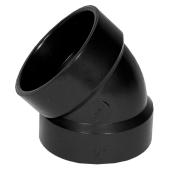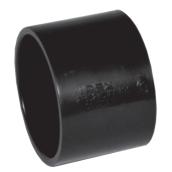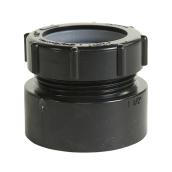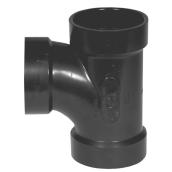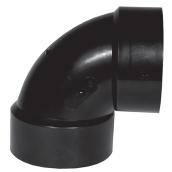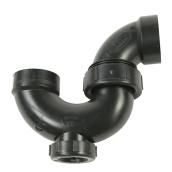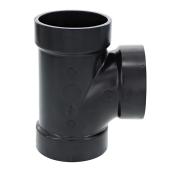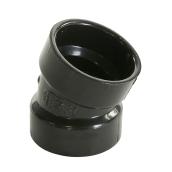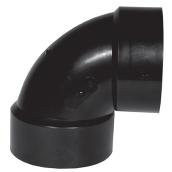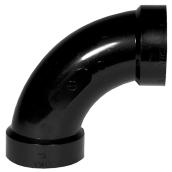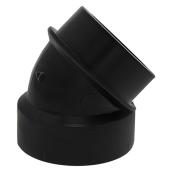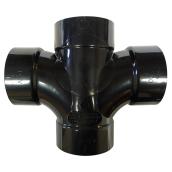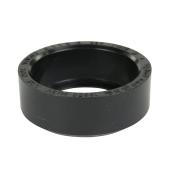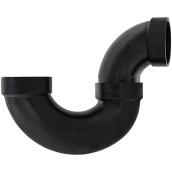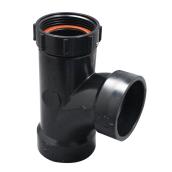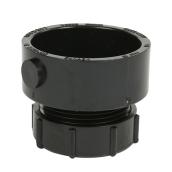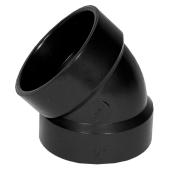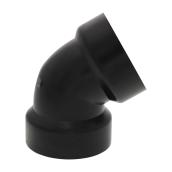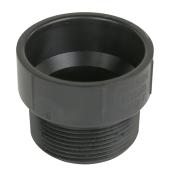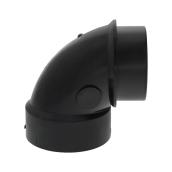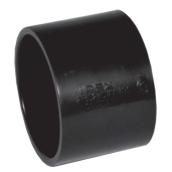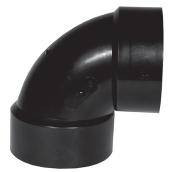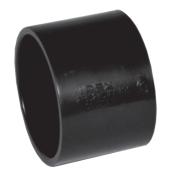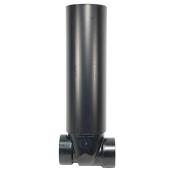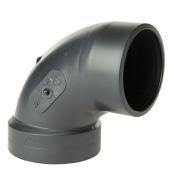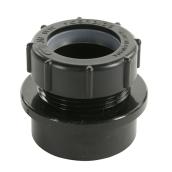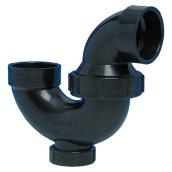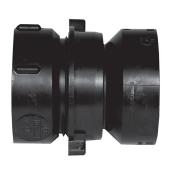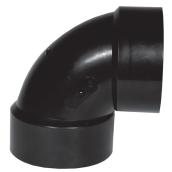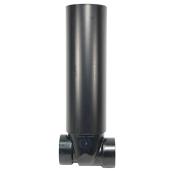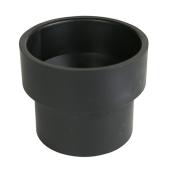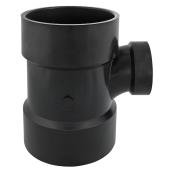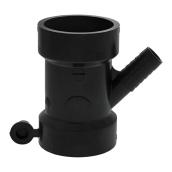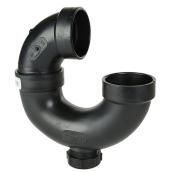Fittings - ABS (DWV) (232)
Choose ABS DWV fittings to save on plumbing costs and have fewer joints when connecting pipe systems. Acrylonitrile-butadiene-styrene (ABS) is a lightweight, high-strength, and flexible thermoplastic material that’s ideal for drainage, waste, and vent (DWV) fittings. Choose pipe fittings with right angle bends to make sturdy elbows for straight pipes for residential and commercial installations.
Use PEX fittings as alternatives for indoor water lines. Made from cross-linked polyethylene, these are tough, flexible plastic tubing and can withstand sub-zero temperatures without bursting. Install copper fittings closest to boilers and furnaces since they withstand high temperatures better than plastic options.
When you’re setting up a home plumbing project, ABS DWV fittings are a popular choice. They’re versatile and have use in applications beyond carrying drinking water. This includes waste removal, solid matter transport, and even structural applications, such as for making furniture frames.
ABS material is both lightweight and strong. Unlike metal, it’s not subject to rust or corrosion. This makes it easy to work with and helps prolong the service life of your plumbing system.
ABS fittings work with ABS pipes. They come in many configurations, such as 45- and 90-degree elbows, three- or four-sided tees, 45-degree wye connections, and more. Each of those ABS pipe fittings adjusts the angle at which your pipe is running, and several also allow you to branch out into multiple lines.
Other useful pieces include threaded adaptors that allow you to screw in other pieces and end caps for plugging off a section of line. Regular couplings allow you to connect two long lines to one another. You can also get ABS DWV fittings that reduce down, converting from a larger pipe size to a smaller one, or vice versa. Another type of fitting is the P-trap you connect under sink and basin outlets to catch items that fall down the drain.
When you get your fittings, make sure you note the two different diameters. They’re listed as OD, for outer diameter, and ID, for inner diameter. You always need your ABS fittings to have an inner diameter that matches the outer diameter of the pipes. This ensures a snug fit.
Pick up the correct glue for your ABS pipe fittings. As you piece fittings and pipe sections together, you need to glue them in place to ensure that there are no air or liquid leaks. Properly assembled and glued together, ABS fittings and pipes can give you years of reliable service.
Use PEX fittings as alternatives for indoor water lines. Made from cross-linked polyethylene, these are tough, flexible plastic tubing and can withstand sub-zero temperatures without bursting. Install copper fittings closest to boilers and furnaces since they withstand high temperatures better than plastic options.
When you’re setting up a home plumbing project, ABS DWV fittings are a popular choice. They’re versatile and have use in applications beyond carrying drinking water. This includes waste removal, solid matter transport, and even structural applications, such as for making furniture frames.
ABS material is both lightweight and strong. Unlike metal, it’s not subject to rust or corrosion. This makes it easy to work with and helps prolong the service life of your plumbing system.
ABS fittings work with ABS pipes. They come in many configurations, such as 45- and 90-degree elbows, three- or four-sided tees, 45-degree wye connections, and more. Each of those ABS pipe fittings adjusts the angle at which your pipe is running, and several also allow you to branch out into multiple lines.
Other useful pieces include threaded adaptors that allow you to screw in other pieces and end caps for plugging off a section of line. Regular couplings allow you to connect two long lines to one another. You can also get ABS DWV fittings that reduce down, converting from a larger pipe size to a smaller one, or vice versa. Another type of fitting is the P-trap you connect under sink and basin outlets to catch items that fall down the drain.
When you get your fittings, make sure you note the two different diameters. They’re listed as OD, for outer diameter, and ID, for inner diameter. You always need your ABS fittings to have an inner diameter that matches the outer diameter of the pipes. This ensures a snug fit.
Pick up the correct glue for your ABS pipe fittings. As you piece fittings and pipe sections together, you need to glue them in place to ensure that there are no air or liquid leaks. Properly assembled and glued together, ABS fittings and pipes can give you years of reliable service.










